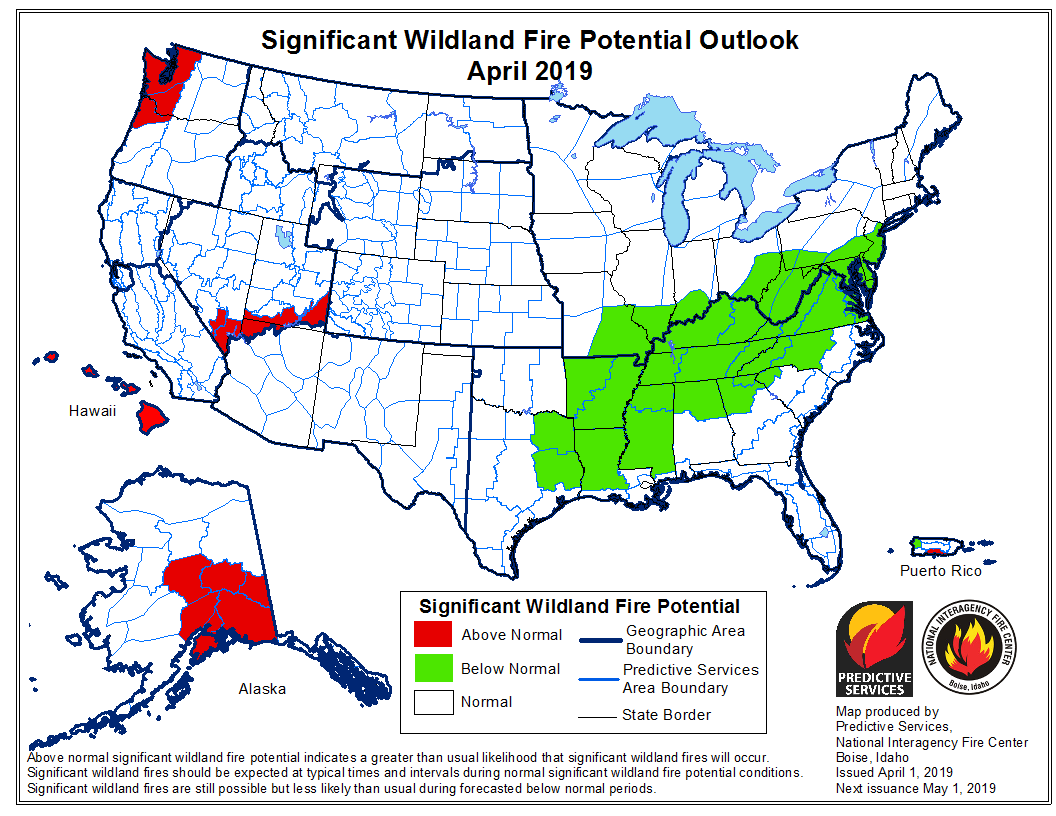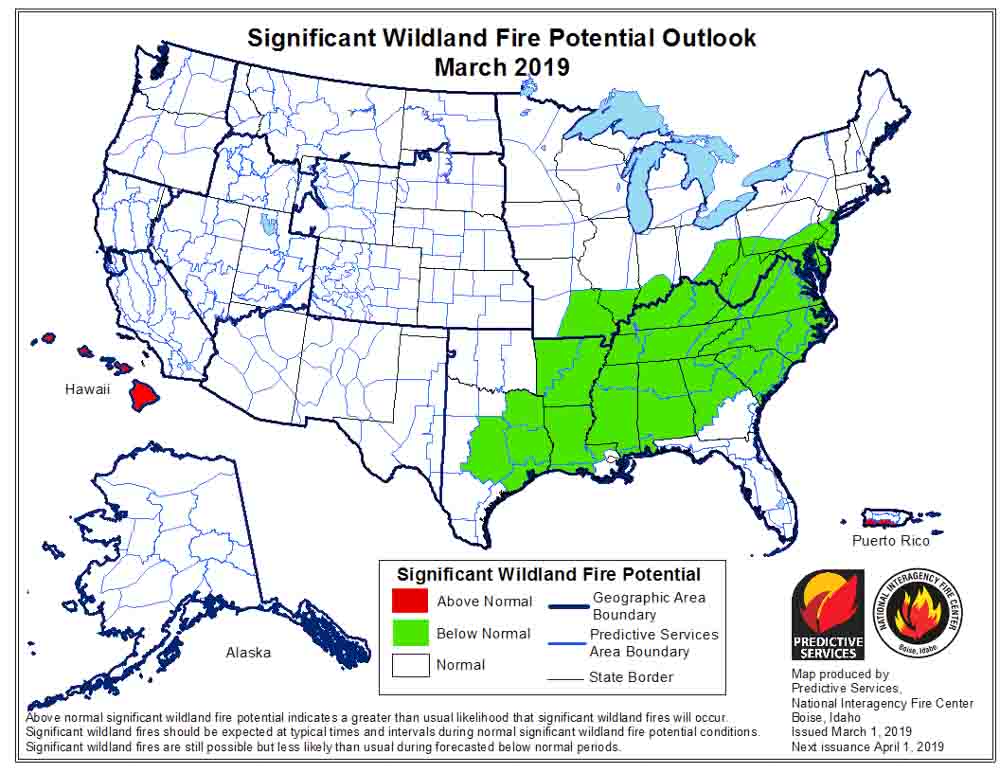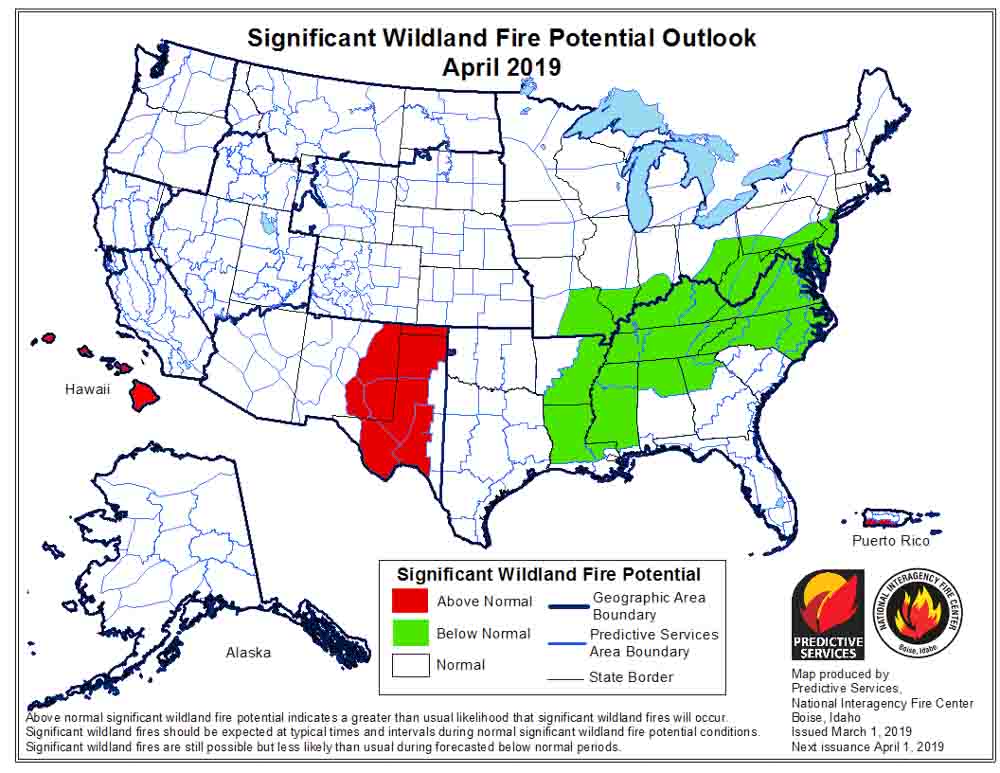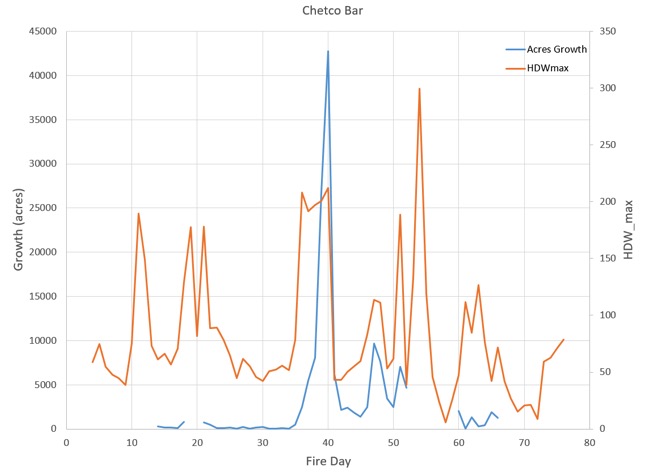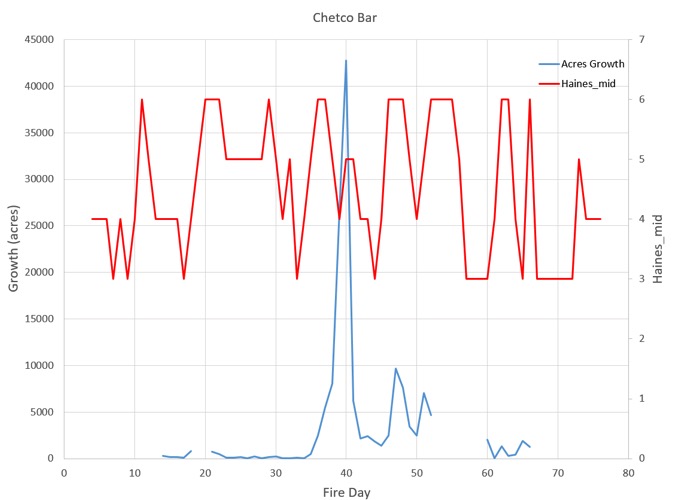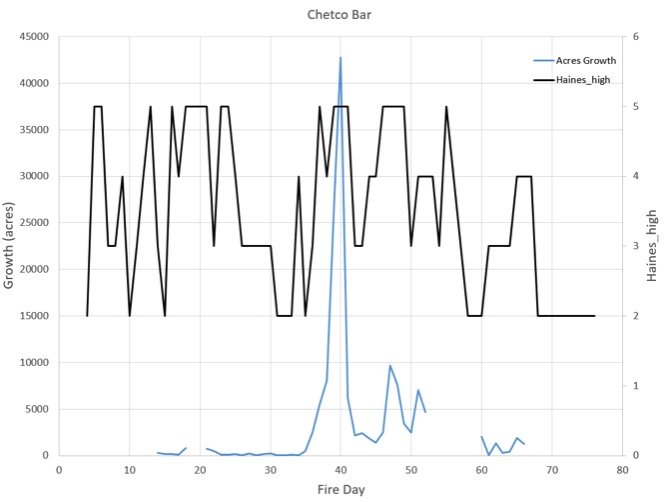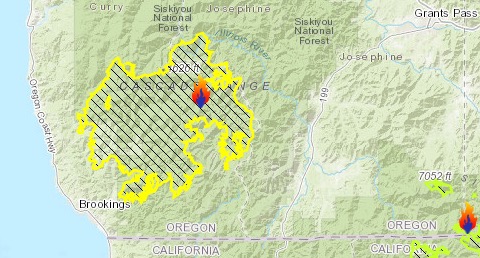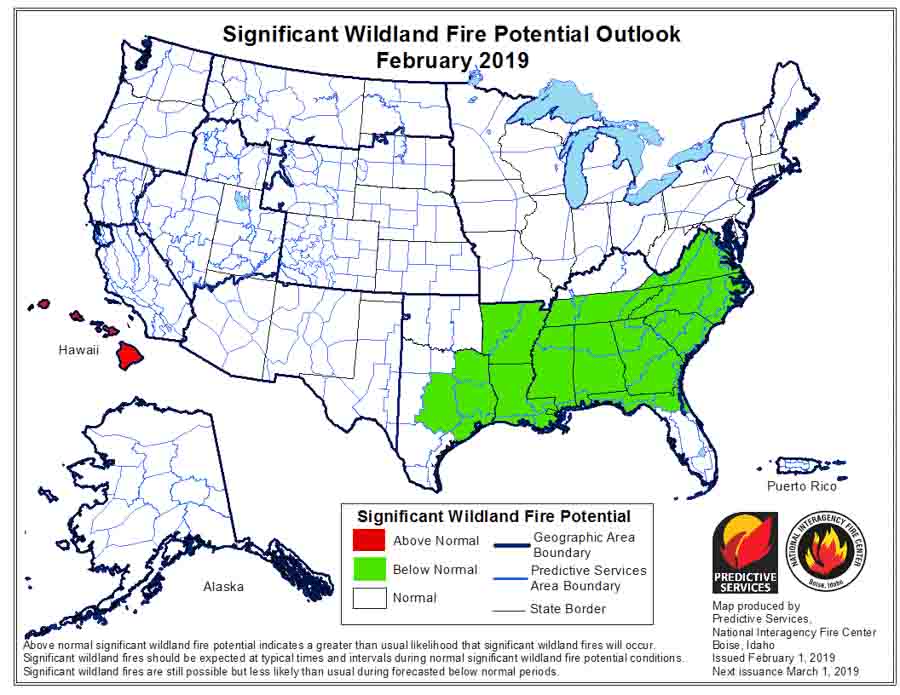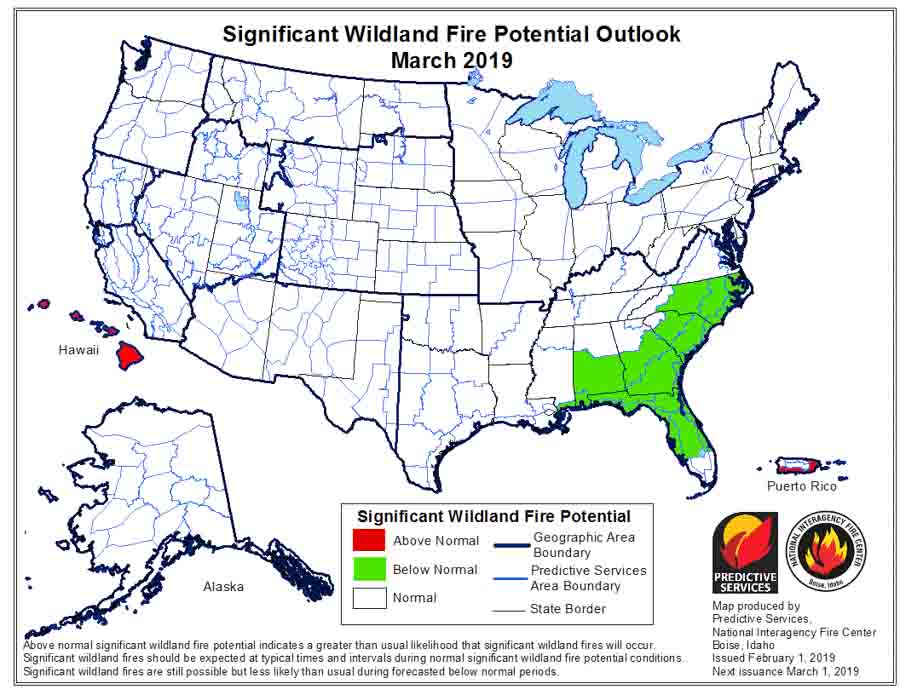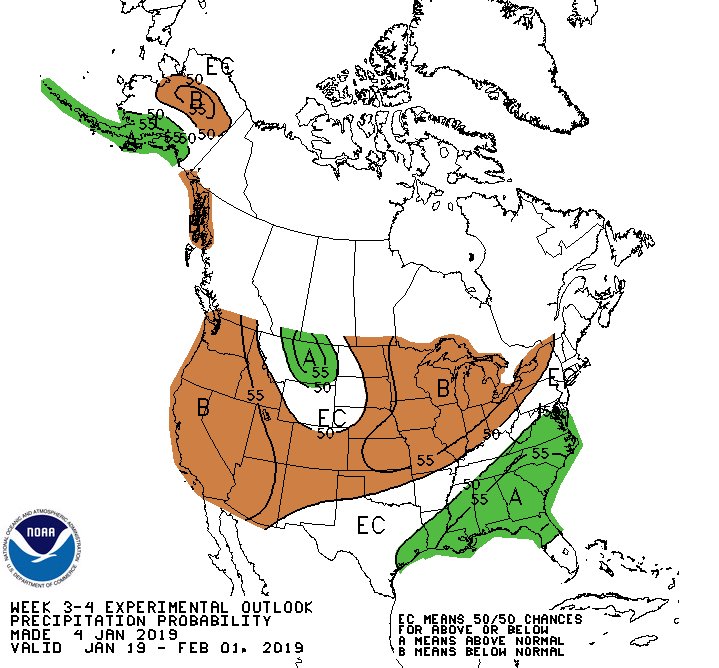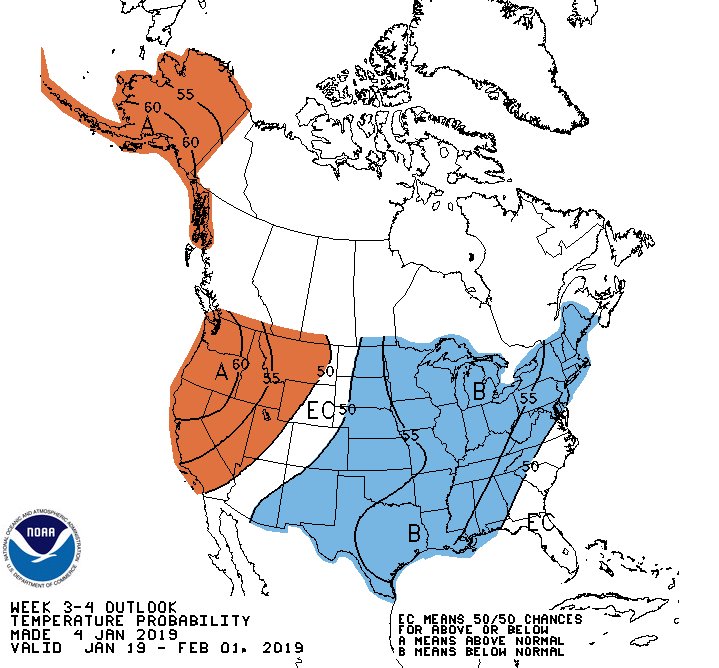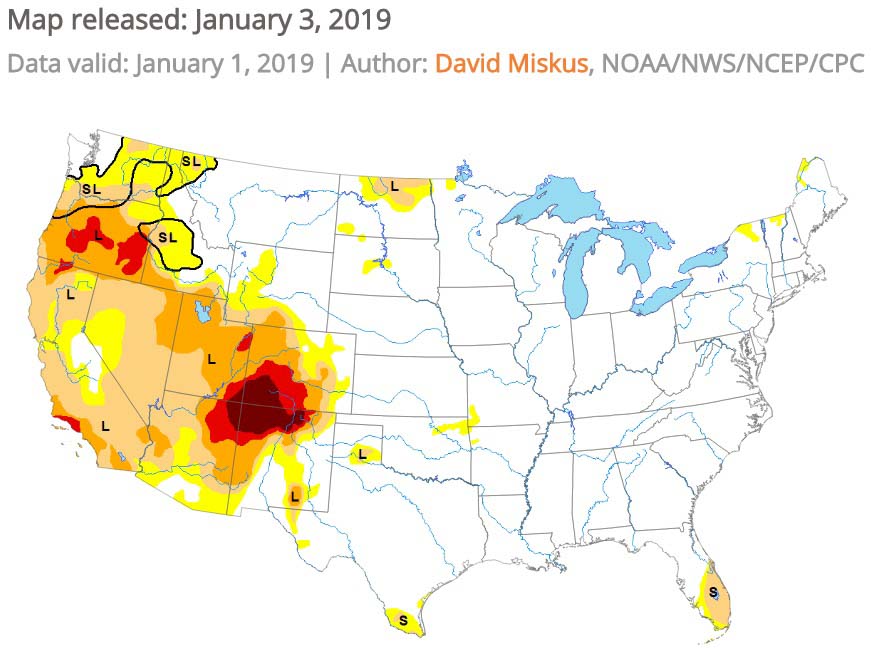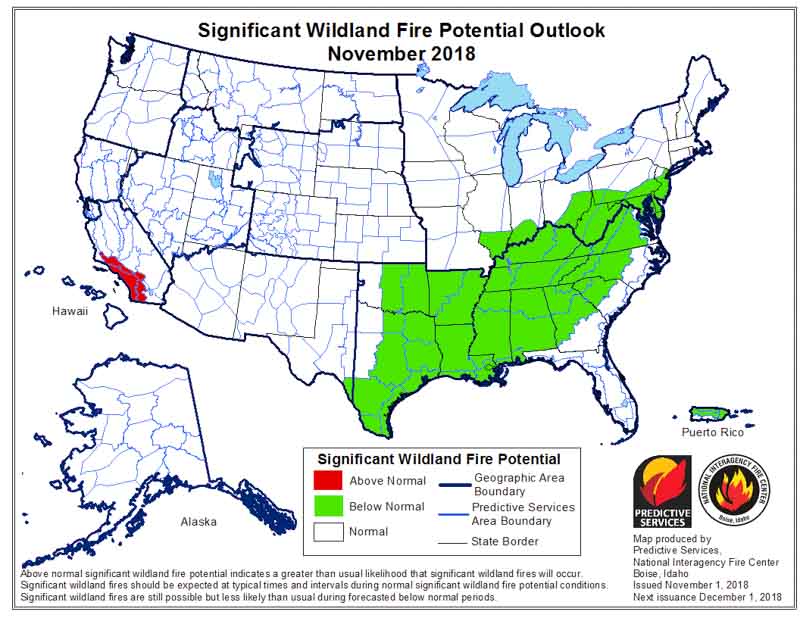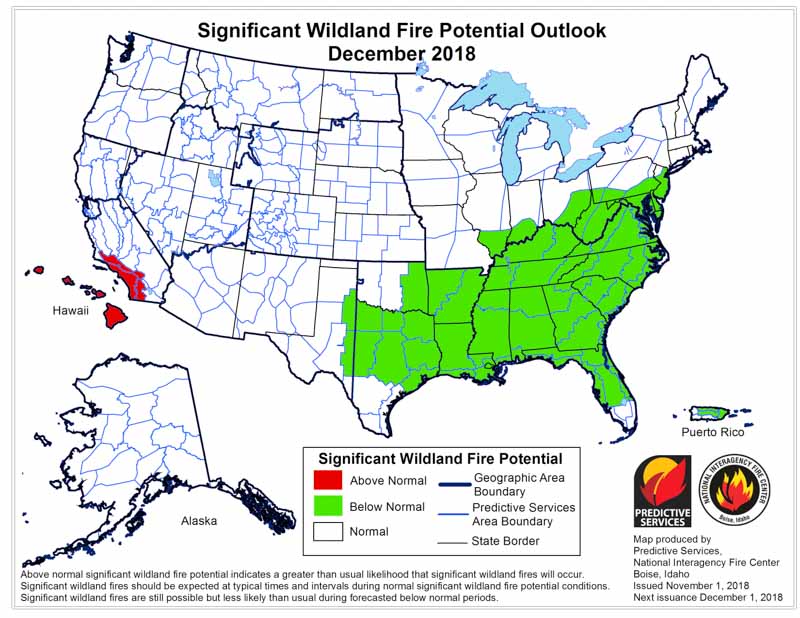On April 1 the Predictive Services section at the National Interagency Fire Center issued their Wildland Fire Potential Outlook for April through July. The data represents the cumulative forecasts of the ten Geographic Area Predictive Services Units and the National Predictive Services Unit.
If NIFC’s analysis is correct, western Washington and northwest Oregon should see above normal wildfire activity through mid-summer. In June wildfire potential should pick up in the coastal mountains of California while most of the Sierra Nevada Mountains are expected to have below normal activity during those two months.
Below:
- An excerpt from the NIFC narrative report for the next several months;
- More of NIFC’s monthly graphical outlooks;
- NOAA’s three-month temperature and precipitation forecasts; and,
- Drought Monitor.
“As the spring greenup begins to take hold across the West in April, mountain snowpack will begin to melt. Snowpack melting rates are a more important factor than snowpack levels in assessing potential fire season activity ahead. An average or slower than average melting rate can allow for a late entry of the timbered elevations into the fire season, whereas a faster melting rate will allow for high elevation fuels to become receptive to fire sooner. In 2019, an average to cooler than average spring is expected, so melting rates should be near average which could result in a delayed fire season entry in areas that have abundant snowpack. An early entry is possible along the Canadian border in areas that have a below average snowpack. In the middle and lower elevations, abundant winter and spring moisture should translate to a heavy crop of fine fuels that will become increasingly receptive to fire activity across the West from south to north in May, June, and July.
“In Alaska, warmer than average temperatures should lead to an early snowpack loss and early entry into the fire season. A possibility exists that precipitation could become above average from June onward. This could lessen some of the state’s peak season fire potential during the second half of the season. After an active early start to the season, fire activity across the state should trend toward average conditions. Hawaii and Puerto Rico will continue to see slightly elevated potential early in the outlook period until the impacts of tropical weather conditions begin to be felt. The Southwestern fire season should begin to end in early July as a below average and perhaps late monsoon arrives.”

